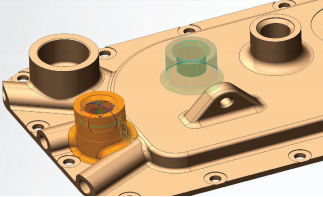 Product design often happens in a multi-team setting. While there are many advantages of this, including being able to scale more quickly or access particular expertise, there are drawbacks.
Product design often happens in a multi-team setting. While there are many advantages of this, including being able to scale more quickly or access particular expertise, there are drawbacks.
Working with external partners, vendors and customers traditionally comes with a range of challenges. In particular, it can be difficult to work together when not everyone on the team is using the same CAD systems. Having to work in a multi-CAD environment can take more time and effort to achieve the same results, costing both time and money. But, this no longer has to be the case. Flexible modeling means that working with multi-CAD is easier than ever before.
Why are multi-CAD environments traditionally more challenging?
The main cause of this problem comes from the way that different CAD tools calculate geometry. There is not necessarily a right or a wrong way. But, this difference means that when you import CAD data from one system into another, it can take hours to get clean geometry and make the most straightforward changes.
Also, CAD tools usually define features in a different way. This means that when data is imported into a new CAD system, there are no features. Therefore, there is no design intent. As a result, designers and engineers have to manually recreate the features from scratch.
How does Creo Flexible Modeling help?
In short, Creo Flexible Modeling takes the challenges out of working with multi-CAD data. Using Creo FMX, it is easy to choose and modify the geometry that you want to amend, including rounds and patterns, without running the risk of breaking the original constraints. It means that you can make the amends that you need to do, without running the risk of losing the existing design intent.
As a result of this, Creo Flexible Modeling means that you’ll save time when working with multi-CAD data. It also means that there are less likely to be errors in your work, as you won’t have to completely recreate the model. All this leads to a lot less frustration and much greater productivity.
With the capabilities of Creo Flexible Modeling, the range of files that can be shared has greatly expanded. The old fears and concerns that you have had in the past about working with vendors or clients no longer exist.
Importing and modifying non-native files can be both quick and efficient. Additionally, if you want to add parametric intelligence to the model, you can do so without the worry that the model will crash.
It doesn’t matter where the CAD files originated. Regardless of the file format, you can import a model and maintain the ability to recognise and modify its features, offering you real design flexibility.
Want to find out more about using the latest CAD system? Get a free 30-day trial of Creo Parametric here:
